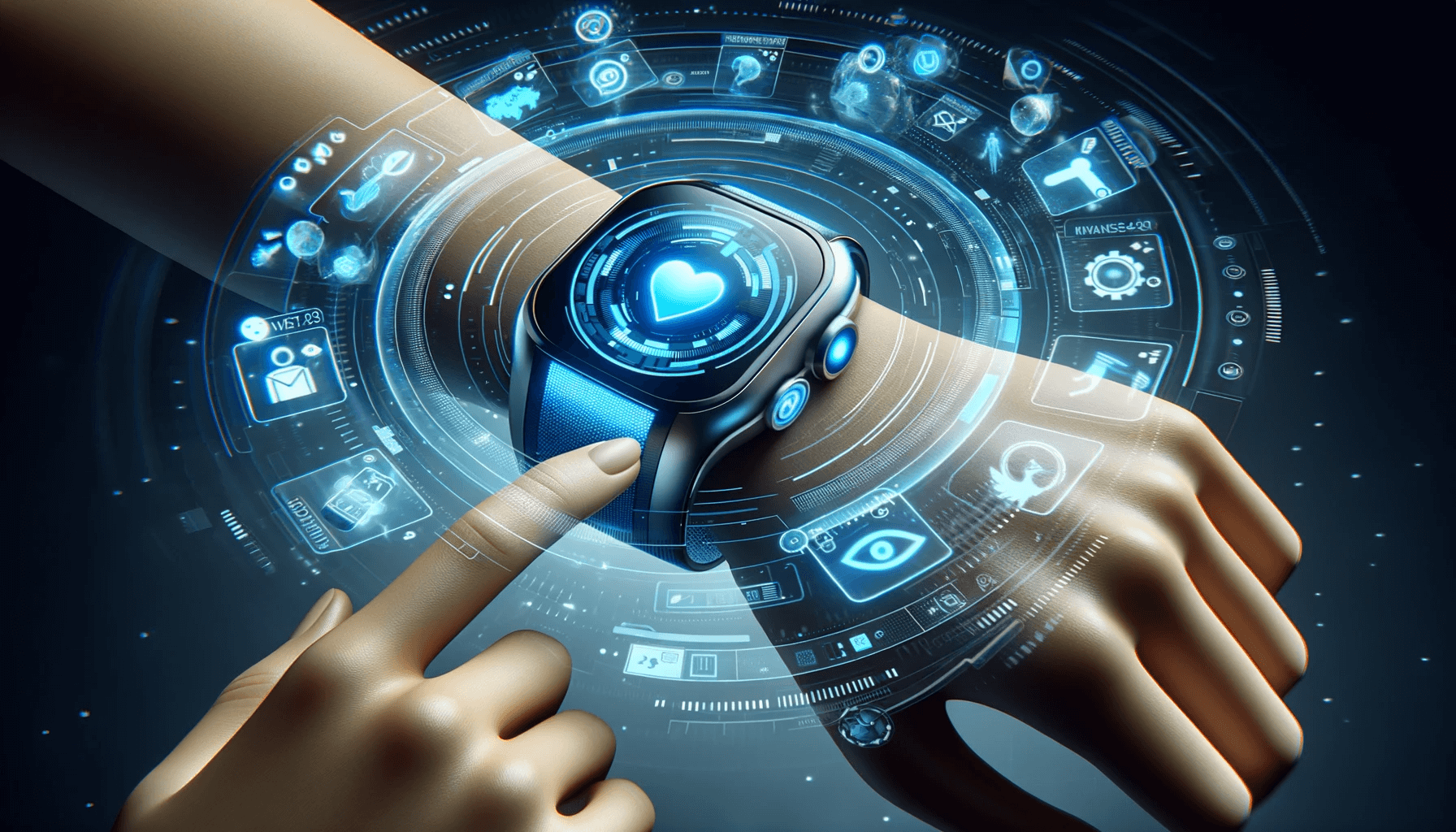Table of Contents
In the ever-evolving landscape of technology, Wearable Tech stands out as the next monumental shift in personal computing. This burgeoning field promises to revolutionize not just how we interact with technology, but also how technology integrates into our daily lives. From smartwatches that offer real-time health monitoring to AR glasses that overlay digital information onto the physical world, wearable technology is breaking new ground in convenience, functionality, and user experience.
This comprehensive guide aims to explore the multifaceted world of Wearable Tech, delving into its current applications, future potential, and the challenges that lie ahead. Whether you’re a tech enthusiast, a healthcare professional, or someone simply interested in staying ahead of technological trends, this guide will provide you with the insights you need to understand the transformative impact of Wearable Tech on personal computing.
Are you ready to dive into the future of personal computing through the lens of Wearable Tech? Let’s get started.
The Evolution of Wearable Tech: A Journey from Gimmick to Game-Changer
As we delve into the topic of Wearable Tech, it’s crucial to understand its evolutionary trajectory. This section aims to provide a comprehensive overview of how wearable technology has transitioned from being a mere gimmick to a game-changing element in personal computing.
![]()
The Humble Beginnings
The concept of wearable technology isn’t new; it dates back to simple devices like calculator watches and rudimentary pedometers. These early devices were often dismissed as novelties rather than functional tools.
The Smartphone Era: A Catalyst for Change
The real game-changer for Wearable Tech was the advent of smartphones. The ability to sync wearables with smartphones opened up a plethora of functionalities, from health monitoring to real-time notifications.
- Health and Fitness: Modern wearables offer a wide range of health monitoring features, including heart rate tracking, sleep analysis, and even stress measurement.
- Convenience and Connectivity: The ability to receive notifications, make calls, and even respond to messages directly from a wearable device has redefined the concept of convenience.
The Future: Beyond the Wrist
While wrist-based devices like smartwatches and fitness trackers are currently the most popular form of Wearable Tech, the future holds much more:
- Augmented Reality: Devices like AR glasses are on the horizon, promising to change the way we interact with the world around us.
- Integrated Clothing: Smart fabrics and e-textiles offer the potential for even more seamless integration of technology into our daily lives.
By understanding the past and present of Wearable Tech, we can better anticipate its future impact on personal computing and various other aspects of our lives.
Applications and Use Cases: A Closer Look
Understanding the diverse applications of Wearable Tech is crucial for grasping its transformative impact on personal computing and daily life.
![]()
Healthcare and Wellness
Remote Monitoring
One of the most significant contributions of Wearable Tech in healthcare is the ability for remote monitoring. Devices can continuously track vital signs like heart rate, blood pressure, and oxygen levels, providing real-time data to healthcare providers.
- Telemedicine: The data collected can be used in telemedicine consultations, making healthcare more accessible.
- Early Detection: Continuous monitoring can also aid in the early detection of potential health issues, allowing for timely intervention.
Rehabilitation
Wearable technology is also being used in physical therapy and rehabilitation.
- Adaptive Programs: Advanced wearables can adapt exercises based on the patient’s progress, ensuring more effective rehabilitation.
- Progress Tracking: These devices can also track and record the patient’s progress over time, providing valuable data for healthcare providers.
Fitness and Sports
Performance Metrics
For athletes and fitness enthusiasts, Wearable Tech offers detailed performance metrics.
- Real-Time Feedback: Devices can provide real-time feedback on speed, distance, and form, allowing athletes to make instant adjustments.
- Training Programs: Some wearables come with built-in training programs, offering guided workouts based on the user’s fitness level.
Workplace Productivity
Real-Time Communication
In professional settings, Wearable Tech can enhance productivity through real-time communication features.
- Hands-Free Operation: Devices like smart glasses can offer hands-free communication, allowing workers to focus on tasks.
- Task Management: Some wearables can integrate with project management software, providing real-time updates on tasks and deadlines.
Entertainment and Gaming
Immersive Experiences
Wearable Tech is also making inroads into the entertainment sector, particularly in the realm of virtual and augmented reality.
- VR Gaming: Wearable VR headsets offer immersive gaming experiences, taking interactivity to a new level.
- AR Tourism: Augmented reality wearables can enhance tourism experiences, providing real-time information on landmarks and points of interest.
By exploring these in-depth applications, we gain a clearer understanding of the transformative potential of Wearable Tech across various sectors.
Navigating the Complex Landscape of Wearable Tech
As we delve deeper into the world of Wearable Tech, it’s crucial to explore the challenges and ethical considerations that accompany its rise. This comprehensive section aims to shed light on these complexities.

Navigating Data Concerns
Data privacy remains a significant concern as Wearable Tech collects a plethora of personal information, ranging from health metrics to geolocation data. Understanding how this data is stored, accessed, and utilized is crucial for responsible use.
Affordability and Access
The economic barriers to Wearable Tech adoption cannot be ignored. High costs of devices and associated data plans can make these technologies inaccessible to lower-income populations, raising questions about digital inequality.
User Experience and Design
The design and user interface of Wearable Tech play a critical role in its adoption and usability. Poorly designed interfaces can deter users, while intuitive designs can significantly enhance user experience.
Health Implications
As Wearable Tech often involves health monitoring, understanding its long-term health implications is essential. This includes both the potential benefits and risks associated with continuous health tracking.
Regulatory Landscape
The legal framework surrounding Wearable Tech is still evolving. Understanding existing regulations and anticipating future legislative changes is crucial for both users and manufacturers.
Ethical Dilemmas
The ethical landscape of Wearable Tech is complex, involving issues like potential surveillance, data misuse, and the ethical responsibilities of companies producing these devices.
Sustainability and Environmental Impact
The environmental footprint of Wearable Tech, including manufacturing and disposal, is an area that requires attention. Sustainable practices are essential for the long-term viability of these technologies.
Social and Cultural Impact
Finally, the social and cultural implications of Wearable Tech are vast. From affecting social interactions to potentially creating new forms of digital divide, these technologies are reshaping the fabric of society.
By navigating these complexities, we can approach the adoption and utilization of Wearable Tech in a more informed and responsible manner.
Conclusion: Navigating the Future of Personal Computing
As we wrap up this in-depth guide, it becomes evident that Wearable Tech is not merely a trend but a pivotal force shaping the future of personal computing. Its applications span multiple sectors, from healthcare and fitness to workplace efficiency and beyond.
However, this transformative technology comes with its own set of challenges, including data privacy concerns, affordability issues, and ethical dilemmas. These complexities must be navigated carefully for the technology to reach its full potential and become an integral part of our daily lives.
According to a future outlook, wearable technology has evolved from a niche novelty to a transformative force that enhances our daily lives. As technology continues to advance, we can expect even more innovative applications and solutions that will further integrate wearable technology into our daily routines.
Thank you for joining us on this comprehensive journey. We hope this guide serves as a valuable resource for anyone interested in understanding the evolving landscape of personal computing..









